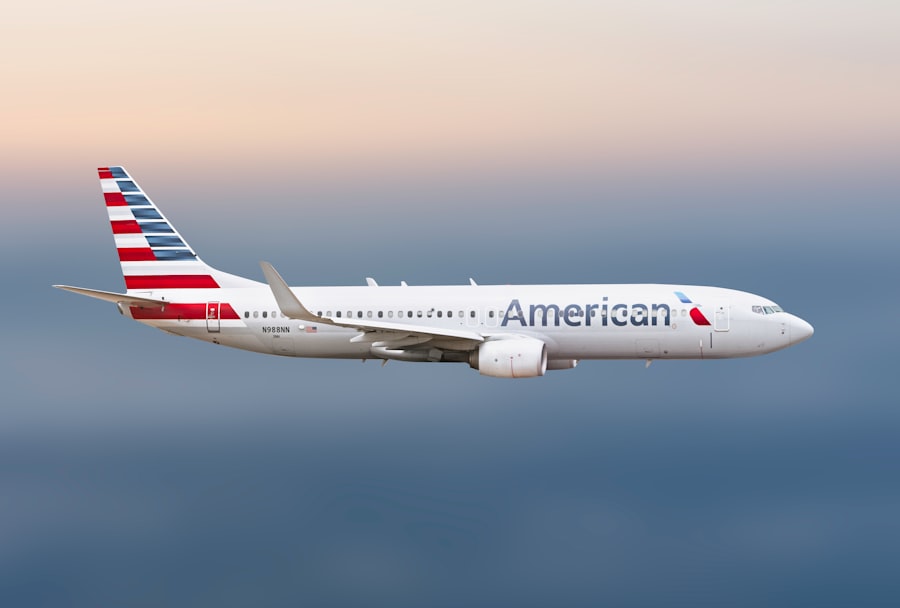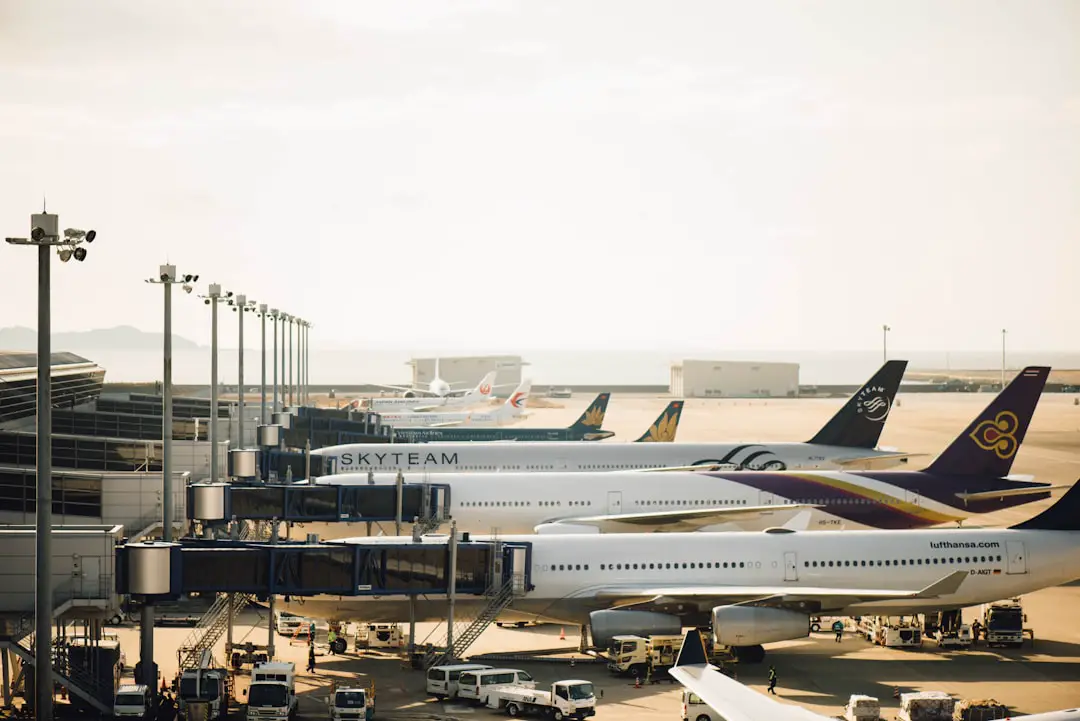Spirit Airlines, founded in 1980, has carved a niche for itself in the competitive landscape of the airline industry as a prominent low-cost carrier. Originally established as a charter airline, it transitioned to a scheduled service model in the 1990s, focusing on providing affordable travel options primarily within the United States and to select international destinations. The airline’s business strategy revolves around offering bare-bones fares that appeal to budget-conscious travelers, making air travel accessible to a broader audience.
Spirit Airlines operates a fleet of Airbus A320 family aircraft, which are known for their fuel efficiency and cost-effectiveness, aligning with the airline’s overarching goal of minimizing operational expenses. The airline’s branding emphasizes its no-frills approach, encapsulated in its slogan, “Bare Fare.” This tagline reflects Spirit’s commitment to transparency in pricing, where customers pay only for the services they choose to use. This model has attracted a diverse customer base, from families seeking affordable vacations to business travelers looking for economical options.
However, Spirit Airlines has also garnered a reputation for its controversial policies and customer service challenges, which have sparked debates about the trade-offs between cost savings and passenger experience.
Key Takeaways
- Spirit Airlines is a low-cost carrier known for its no-frills approach and cost-cutting measures.
- The airline focuses on maximizing ancillary revenue and utilizing secondary airports to reduce operational costs.
- High density seating and fuel efficiency are key factors in Spirit’s business model, allowing for lower fares.
- Limited customer service and point-to-point routes contribute to the airline’s cost-saving strategies.
- While flying with Spirit Airlines may offer cost savings, it comes with trade-offs in terms of comfort and customer service.
The Business Model of Low-Cost Carriers
Maximizing Revenue Potential
By maximizing the number of flights per day and minimizing turnaround times, LCCs can increase their revenue potential while keeping operational costs low. For instance, Spirit Airlines often schedules multiple flights to popular destinations throughout the day, ensuring that their aircraft are in constant use.
Eliminating Unnecessary Services
Another critical aspect of the LCC model is the elimination of unnecessary services that traditional airlines typically provide. This includes complimentary meals, in-flight entertainment, and even checked baggage allowances. By stripping down the travel experience to its essentials, Spirit Airlines can pass on the savings to customers who prefer lower base fares over bundled services.
A Shift in Market Share
This approach has resonated with many travelers who prioritize cost over comfort, leading to a significant market share for LCCs in recent years.
Minimal Frills, Maximum Savings

Spirit Airlines epitomizes the minimal frills approach that characterizes many low-cost carriers. The airline’s business strategy is built around offering the lowest possible base fare while charging for additional services that passengers may require. This means that while a ticket may appear inexpensive at first glance, the final price can increase significantly once add-ons such as seat selection, baggage fees, and onboard refreshments are factored in.
For example, a traveler might find a ticket priced at $39 but could end up paying over $100 after including fees for carry-on luggage and seat assignments. This pricing strategy has led to mixed reactions from consumers. On one hand, it allows budget travelers to customize their experience according to their needs and financial constraints. On the other hand, it can lead to frustration when passengers realize that what seemed like an unbeatable deal comes with hidden costs. Spirit Airlines has been transparent about its pricing structure, but the perception of value can vary widely among customers based on their expectations and travel habits.
The Importance of Ancillary Revenue
| Metrics | Data |
|---|---|
| Total Ancillary Revenue | 1.2 trillion |
| Percentage of Total Revenue | 10% |
| Top Ancillary Revenue Sources | Baggage fees, in-flight sales, loyalty programs |
| Impact on Profitability | Can increase airline profitability by 40% |
Ancillary revenue has become a cornerstone of Spirit Airlines’ financial success and is a defining characteristic of the low-cost carrier model. This revenue stream encompasses all income generated from services beyond the base fare, including fees for checked baggage, seat selection, priority boarding, and onboard purchases such as snacks and beverages. In fact, ancillary revenue has grown to represent a significant portion of Spirit’s overall earnings; reports indicate that it can account for more than 40% of total revenue for some low-cost carriers.
The reliance on ancillary revenue allows Spirit Airlines to maintain competitive base fares while still achieving profitability. For instance, by charging for checked bags rather than including them in the ticket price, Spirit can attract price-sensitive customers who may not need to check luggage at all. This strategy not only enhances revenue but also encourages passengers to travel lighter, which can lead to operational efficiencies such as reduced fuel consumption and quicker boarding times.
Utilizing Secondary Airports
One of the strategic advantages of Spirit Airlines is its use of secondary airports rather than major hubs. By operating out of less congested airports, Spirit can reduce landing fees and operational costs significantly. Secondary airports often have lower traffic volumes, which translates into shorter wait times for takeoff and landing, allowing for quicker turnaround times between flights.
For example, instead of flying into Los Angeles International Airport (LAX), Spirit might operate out of nearby airports like Long Beach or Burbank, which can offer more favorable operating conditions. This strategy not only helps keep costs down but also appeals to travelers who prefer avoiding the hustle and bustle of major airports. Many passengers appreciate the convenience of smaller airports, which often provide easier access and less stressful travel experiences.
However, this approach can also present challenges; secondary airports may be located farther from city centers or popular tourist destinations, potentially increasing ground transportation costs for travelers.
High Density Seating and Fuel Efficiency

Spirit Airlines maximizes its revenue potential through high-density seating configurations on its aircraft. By increasing the number of seats available on each flight—often at the expense of legroom and personal space—Spirit can accommodate more passengers per flight. For instance, while many airlines configure their Airbus A320s with around 150 seats, Spirit often fits up to 178 seats in a single aircraft.
This strategy allows Spirit to generate more income from each flight while keeping ticket prices low. In addition to high-density seating, Spirit Airlines places a strong emphasis on fuel efficiency as part of its operational strategy. The airline’s fleet consists primarily of newer Airbus A320 family aircraft that are designed with advanced aerodynamics and fuel-saving technologies.
These modern planes consume less fuel per passenger mile compared to older models, which not only reduces operational costs but also aligns with growing environmental concerns about aviation emissions. By prioritizing fuel efficiency alongside high-density seating, Spirit Airlines can maintain its low-cost structure while addressing sustainability issues in the aviation industry.
Limited Customer Service and Operational Costs
Spirit Airlines’ commitment to keeping operational costs low extends to its customer service model as well. The airline employs a lean staffing approach that minimizes overhead expenses but can lead to challenges in customer support. Passengers often report long wait times for assistance and limited options for resolving issues directly with airline representatives.
This approach is consistent with the low-cost carrier philosophy of prioritizing efficiency over extensive customer service offerings. While this model may work for some travelers who are accustomed to self-service options and digital solutions, it can be frustrating for those who expect more personalized support during their travel experience. For example, customers facing flight cancellations or delays may find it difficult to reach a representative quickly or may be directed to online resources rather than receiving immediate assistance.
This trade-off between cost savings and customer service quality is a critical consideration for potential passengers weighing their options when booking flights with Spirit Airlines.
The Impact of Point-to-Point Routes
Spirit Airlines primarily operates on a point-to-point route system rather than the traditional hub-and-spoke model used by many legacy carriers. This means that flights are designed to connect travelers directly between two destinations without requiring layovers at major hubs. The point-to-point approach allows Spirit to offer more direct routes that cater to specific markets and demand patterns.
This operational strategy not only enhances convenience for passengers but also contributes to increased efficiency in flight scheduling and aircraft utilization. By avoiding layovers, Spirit can reduce overall travel time for passengers while maximizing the number of flights operated each day. Additionally, this model allows the airline to tap into underserved markets where demand may not justify a full-service carrier’s presence but where budget-conscious travelers are eager for affordable options.
The Role of Direct Distribution and Cost-Cutting Measures
Direct distribution plays a crucial role in Spirit Airlines’ cost-cutting measures and overall business strategy. By encouraging customers to book flights directly through its website or mobile app rather than through third-party travel agencies or online booking platforms, Spirit can avoid paying commission fees that would otherwise cut into its profit margins. This direct-to-consumer approach not only enhances profitability but also allows Spirit to maintain greater control over its pricing strategies and promotional offers.
Moreover, Spirit Airlines employs various cost-cutting measures across its operations to sustain its low-fare model. These measures include optimizing fuel consumption through efficient flight planning and maintenance practices as well as leveraging technology for streamlined operations. For instance, automated check-in processes reduce staffing needs at airport counters while enhancing passenger convenience.
By continuously seeking ways to minimize costs without compromising safety or regulatory compliance, Spirit Airlines can remain competitive in an increasingly crowded market.
The Effect of Competition on Pricing
The competitive landscape within the airline industry significantly influences pricing strategies among carriers like Spirit Airlines. As more low-cost carriers enter the market and traditional airlines adopt similar pricing models in response to consumer demand for affordable travel options, fare wars often ensue. These fare wars can lead to dramatic fluctuations in ticket prices as airlines vie for market share by undercutting one another.
Spirit Airlines has positioned itself as a leader in this competitive environment by consistently offering some of the lowest fares available while maintaining its ancillary revenue model. However, this competition also necessitates vigilance; if competitors lower their prices or enhance their service offerings without corresponding increases in costs, Spirit may need to adjust its pricing strategies accordingly to retain its customer base. The dynamic nature of competition in the airline industry underscores the importance of adaptability and innovation in maintaining profitability while delivering value to consumers.
The Pros and Cons of Flying with Spirit Airlines
Flying with Spirit Airlines presents both advantages and disadvantages that potential travelers must weigh carefully before booking their flights. On one hand, the airline’s low base fares make air travel accessible for budget-conscious individuals and families seeking affordable options for domestic and international travel. The ability to customize travel experiences through optional add-ons allows passengers to tailor their journeys according to personal preferences and financial constraints.
Conversely, the minimal frills approach can lead to frustrations regarding customer service quality and unexpected fees that may inflate the final cost of travel significantly. Passengers accustomed to traditional airlines’ amenities may find themselves disappointed by Spirit’s limited offerings and self-service model. Ultimately, whether flying with Spirit Airlines is a suitable choice depends on individual priorities—those seeking the lowest possible fares may find it an attractive option, while others may prefer airlines that offer more comprehensive services despite higher ticket prices.
Spirit Airlines is known for offering incredibly low fares, but have you ever wondered why their prices are so cheap? According to a recent article on TakeTravelInfo, one of the main reasons behind Spirit’s affordability is their no-frills approach to flying. By charging extra for things like carry-on bags and in-flight snacks, Spirit is able to keep their base fares low and appeal to budget-conscious travelers. This strategy has helped them become one of the most popular budget airlines in the industry.
FAQs
What makes Spirit Airlines so cheap?
Spirit Airlines is able to offer lower fares compared to other airlines due to its no-frills approach to flying. The airline charges for additional services such as carry-on and checked baggage, seat selection, and in-flight refreshments, allowing them to keep base fares low.
Are there any drawbacks to flying with Spirit Airlines?
While Spirit Airlines offers low base fares, passengers should be aware of additional fees for services such as carry-on and checked baggage, seat selection, and in-flight refreshments. Additionally, the airline operates a smaller fleet and has a more limited route network compared to larger carriers.
How does Spirit Airlines keep costs low?
Spirit Airlines keeps costs low by operating a single aircraft type (Airbus A320 family), using secondary airports to reduce landing fees, and maintaining high aircraft utilization rates. The airline also focuses on direct sales through its website to avoid distribution costs associated with third-party booking platforms.
Is Spirit Airlines safe to fly with?
Spirit Airlines meets all safety regulations set by the Federal Aviation Administration (FAA) and has a strong safety record. The airline’s fleet is relatively young, and it adheres to rigorous maintenance and safety standards.
What are some tips for finding the best deals on Spirit Airlines?
To find the best deals on Spirit Airlines, travelers should consider booking in advance, being flexible with travel dates, and signing up for the airline’s frequent flyer program to receive exclusive offers and promotions. Additionally, monitoring the airline’s website and social media channels for flash sales and special deals can help secure low fares.
